In the critical first year of life, infants undergo profound developmental changes that lay the foundation for future learning and growth. As caregivers and educators, it is essential to harness these early months, particularly between the ages of 6 to 12 months, to create enriching environments that stimulate cognitive, social, and emotional development. This article delves into the intricacies of crafting effective lesson plans tailored specifically for infants in this developmental stage, emphasizing engaging and age-appropriate activities that foster exploration and interaction.
By integrating principles of early childhood education with the latest developmental research, we can design experiences that not only captivate infants but also support their burgeoning skills in communication, motor coordination, and problem-solving. Through a comprehensive examination of various activities and strategies, this piece aims to equip caregivers with the tools necessary to nurture and maximize the developmental potential of infants, ultimately laying the groundwork for lifelong learning.
Understanding Developmental Milestones in Infants Aged 6-12 Months

During the period from 6 to 12 months, infants experience remarkable growth and development across multiple domains. Physical milestones typically include rolling over, sitting up without support, and beginning to crawl, which are crucial in enhancing their motor skills. At this stage, infants also start to develop their sensory experiences as they explore their environment. Cognitive milestones may see them engaging in simple problem-solving tasks, such as pulling at a toy that is out of reach. Parents and caregivers can support these developments through activities that encourage exploration, such as sensory bins filled with safe objects that stimulate touch and sight.
Social and emotional growth is significant during these months, with infants displaying preferences for caregivers and showing excitement during social interactions. To foster these connections, incorporating activities like turn-taking games or joint singing can enhance bonding and communication skills. Introducing a variety of textures and sounds through toys can not only support sensory development but also facilitate early language skills as caregivers narrate and describe each experience. Here’s a summary table of key milestones and suggested activities:
| Milestone | Suggested Activity |
|---|---|
| Rolling Over | Encourage tummy time with colorful mats |
| Sitting Up | Create a soft play area with pillows |
| Crawling | Set up a safe crawling path with toys |
| Social Smiles | Engage in peek-a-boo games |
| First Words | Read interactive board books together |
Creating Sensory-Rich Environments for Optimal Learning
Infants aged 6-12 months are in a critical period of sensory development, making it essential to create environments that stimulate their senses. Incorporating a variety of materials can enhance their learning experiences, engaging them in exploratory play that fosters cognitive and motor skills. **Textures**, **colors**, and **sounds** play vital roles in cultivating curiosity and encouraging interaction. For instance, using **soft fabrics**, **crinkly paper**, and **smooth surfaces** can invite infants to touch and manipulate objects, aiding in their sensory development. Additionally, incorporating items that produce different sounds, such as rattles or musical instruments, can spark auditory exploration and improve listening skills.
To optimize learning experiences, it’s beneficial to design spaces that incorporate the following elements:
-
- Interactive play areas with age-appropriate toys that promote fine and gross motor skills.
-
- Natural light to create a welcoming atmosphere, enhancing mood and alertness.
-
- Safe, defined spaces for crawling and exploring, allowing infants to move freely and confidently.
-
- Visual contrasts in the environment to attract attention and stimulate visual tracking.
By thoughtfully arranging sensory-rich settings, caregivers and educators can provide infants with meaningful learning experiences that cater to their developmental needs. This approach not only fosters engagement but also supports holistic growth during these formative months.
Promoting Motor Skills Through Interactive Play Activities
Engaging infants in interactive play activities is essential for promoting their motor skills during the critical developmental phase of 6 to 12 months. At this stage, babies are eager to explore their surroundings, and providing them with varied experiences can significantly enhance their physical capabilities. **Tummy time**, for example, encourages infants to strengthen their neck, shoulder, and back muscles, facilitating crawling. Additionally, activities such as reaching for toys or batting at hanging objects not only stimulate their visual tracking but also promote hand-eye coordination.
To further support motor development, caregivers and educators can incorporate simple yet effective play methods that foster movement and coordination. **Safe and accessible environments** should be created, allowing infants to practice skills such as rolling, sitting up, and crawling. Suggested activities include:
-
- Using colorful balls that can be rolled or tossed.
-
- Setting up a mini obstacle course with soft cushions.
-
- Engaging in nursery rhymes that involve movements like clapping or wiggling.
By ensuring that these activities are not only fun but also purposeful, caregivers can create enriching experiences that lay the groundwork for optimal motor development.
In addition to physical activities, social interaction plays a vital role in motor skill enhancement. Infants learn by watching and mimicking caregivers or peers, making group play sessions particularly beneficial. **Group activities**, such as circle time, allow babies to observe various movements, which they can imitate, enhancing their own motor skills. It is recommended to integrate the following group activities into playtime:
-
- Pass the ball: Encouraging infants to pass a soft ball to each other.
-
- Dance circles: Linking music with movement to stimulate rhythm and coordination.
-
- Interactive storytime: Using puppets or props to engage infants physically and cognitively.
These activities not only promote vital motor skills but also foster social development and emotional connections through shared experiences.
Incorporating Language Development Strategies into Lesson Plans
Integrating language development strategies into lesson plans for infants aged 6-12 months is essential for fostering early communication skills. Engaging activities can promote both verbal and non-verbal communication, enhancing the infants’ abilities to express themselves. **Play-based learning** is particularly effective during this stage, as it allows infants to explore sounds, rhythms, and gestures in a natural context. Consider incorporating activities such as:
-
- Storytime sessions with repetitive phrases and colorful illustrations
-
- Singing nursery rhymes that encourage infant participation through clapping or hand movements
-
- Interactive play with toys that make sounds or require vocal responses
Additionally, providing a print-rich environment can greatly enhance language acquisition. Placing **labels** on everyday objects around the classroom encourages infants to connect words with their meanings. Utilizing **visual aids** such as picture cards can further stimulate recognition and verbal interaction. A simple yet effective approach is to create a basic **language development chart**, categorizing activities that promote communication skills based on the following criteria:
| Activity Type | Language Skill Targeted |
|---|---|
| Listening to Stories | Vocabulary Acquisition |
| Hand Gestures | Non-verbal Communication |
| Singing Songs | Sound Recognition |
Q&A
Q&A: Lesson Plans for Infants 6-12 Months: Engaging and Developmental Activities
Q1: What is the significance of lesson plans for infants aged 6 to 12 months?
A1: Developing structured lesson plans for infants in this age group is crucial as it provides a framework for facilitating early learning and development. At this stage, infants are rapidly acquiring cognitive, motor, and social skills. Well-designed activities encourage sensory exploration, strengthen fine and gross motor coordination, and foster language acquisition, laying a solid foundation for future learning.
Q2: What are some key developmental milestones for infants between 6 and 12 months?
A2: Infants in this age bracket typically exhibit significant growth in several areas. By 6 months, many can sit up independently, babble, and reach for objects. By 12 months, most infants can pull themselves up to stand, may take their first steps, and are beginning to form simple words. Understanding these milestones helps caregivers and educators tailor activities that promote motor skills, language development, and social interaction.
Q3: Can you provide examples of engaging activities included in lesson plans for this age group?
A3: Certainly. Engaging activities for infants aged 6-12 months include:
-
- Sensory Play: Utilizing various textures with items such as soft fabrics, rubbery toys, and smooth blocks to stimulate tactile exploration.
-
- Music and Movement: Incorporating songs and simple dances can enhance auditory skills and promote physical activity.
-
- Interactive Storytime: Reading aloud using board books with colorful images helps in language development and fosters a love for reading.
-
- Simple Puzzles: Offering large, easy-to-handle puzzle pieces can encourage problem-solving skills and hand-eye coordination.
Each of these activities is designed to captivate infants’ attention while supporting their developmental needs.
Q4: What role do caregivers and educators play in implementing these lesson plans?
A4: Caregivers and educators are pivotal in implementing lesson plans effectively. They not only facilitate activities but also create a nurturing environment that encourages exploration and communication. By observing infants during activities, they can adapt lesson plans to suit individual developmental needs and preferences, ensuring that learning is both enjoyable and enriching.
Q5: How do these lesson plans contribute to the broader context of early childhood education?
A5: Lesson plans for infants play a significant role in the framework of early childhood education by highlighting the importance of early developmental interventions. Research indicates that the experiences infants have during the first year significantly influence their brain development and future learning outcomes. This period is critical for establishing emotional bonds, enhancing cognitive capabilities, and fostering social skills, all of which are integral to lifelong learning.
Q6: What challenges might educators face when developing and executing these lesson plans?
A6: Educators may encounter a range of challenges when developing lesson plans for infants, including varying developmental stages among infants in the same cohort, limited attention spans, and the need for constant adaptability in activities. Additionally, ensuring safety while providing engaging and stimulating environments can be challenging. Continuous professional development and collaboration with caregivers are essential for overcoming these obstacles.
Q7: In what ways can parents support the lessons and activities introduced in educational settings?
A7: Parents can support their infant’s learning by reinforcing activities practiced in educational settings at home. Simple actions such as reading together, singing, and providing opportunities for exploration and socialization with peers can enhance the effects of lesson plans. Moreover, open communication between parents and educators can help ensure consistency and provide insights into the child’s progress and specific interests.
Conclusion:
Developing lesson plans for infants aged 6-12 months is vital for fostering growth and development during a key stage of early childhood. Engaging and developmentally appropriate activities not only cater to infants’ natural curiosities but also set the stage for future learning. By recognizing the interconnected roles of caregivers, educators, and parents, we can create a supportive ecosystem that nurtures every infant’s potential.
In Retrospect
crafting effective lesson plans for infants aged 6 to 12 months is not merely an academic exercise but a crucial aspect of fostering early developmental milestones. The activities outlined in this article highlight the significance of engaging infants through sensory exploration, social interaction, and cognitive stimulation. By leveraging age-appropriate materials and techniques, caregivers and educators can create an enriching environment that supports the holistic development of infants during this critical growth period.
Moreover, these foundational experiences lay the groundwork for future learning, establishing a secure base from which infants can explore their surroundings while building cognitive and emotional resilience. As we continue to uncover the nuanced ways in which infants learn and develop, it becomes increasingly imperative to prioritize intentional, developmentally appropriate lesson planning. Such efforts not only serve to enhance individual growth trajectories but also contribute to shaping a generation of curious, confident learners ready to navigate the world around them. As the field of early childhood education evolves, ongoing research and collaboration among professionals will be essential to refine and adapt these lesson plans, ensuring they meet the diverse needs of infants and families in an ever-changing landscape.


